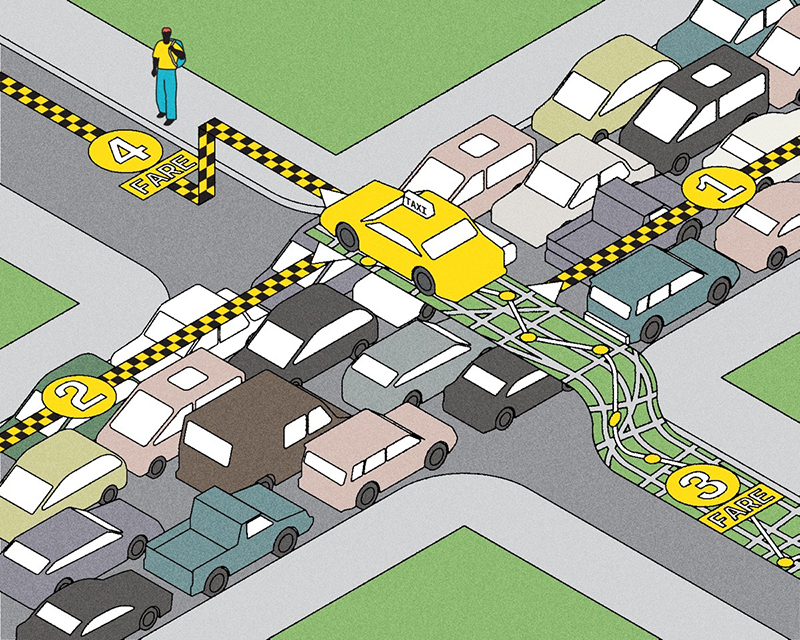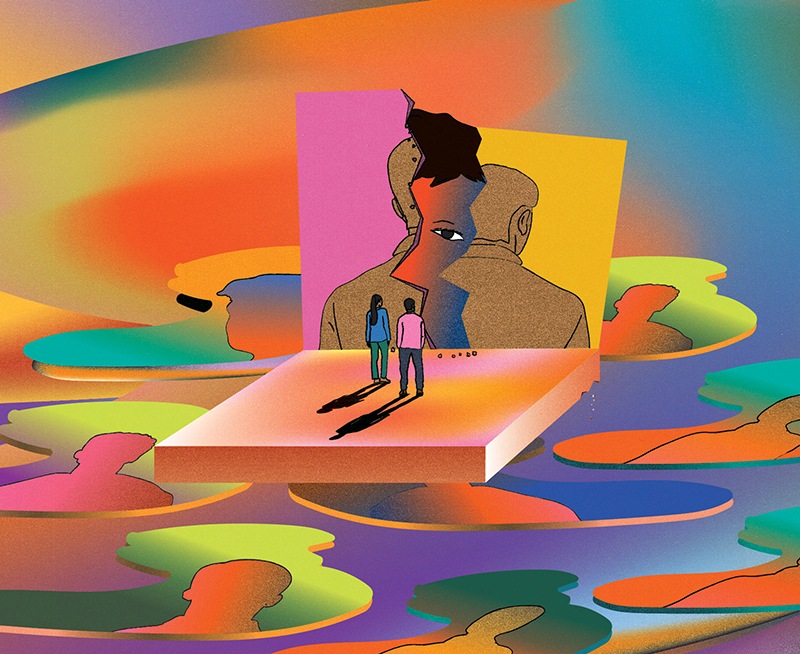When Apple introduced the iPhone last year, the product’s new touch-screen technology was heralded as a major innovation. Unlike other hand-held devices, the iPhone has no tiny keys to type or meddlesome screens to scroll through. Users simply tap, pinch or swipe a finger on the phone’s touch-sensitive screen.
To Daniel Wigdor, a PhD student involved in the computer science department’s Dynamics Graphics Project, however, the iPhone’s technology isn’t all that new. Wigdor and others have been researching touch screen computer interfaces for years. Now, he and his collaborators have helped develop a semitransparent, two-sided device that allows users to type on a virtual keyboard with all 10 fingers instead of just one, crop and resize photos and perform other tasks. Because the unit is partially transparent, it avoids what Wigdor calls the “fat-finger problem,” which affects touchscreen gadgets such as the iPhone. In these devices, the on screen item being touched disappears behind the user’s finger. Wigdor’s unit allows users to view their fingers in shadow, as if seeing them through an opaque screen. Small dots, called touch cursors, hover over the fingers to indicate the point on the screen that the user is about to select.
Wigdor and his collaborators at Mitsubishi Electric Research Labs and Microsoft Research have created a usable prototype, but the technology – which they dubbed LucidTouch – is not yet ready for public consumption. The device relies on an attached webcam to relay images from the other side, and Wigdor hopes to fix this problem by embedding sensors in the unit. He’s not sure when the invention will become widely available. “The question is whether there’s a company interested in bringing it to market,” he says.
Recent Posts
People Worry That AI Will Replace Workers. But It Could Make Some More Productive
These scholars say artificial intelligence could help reduce income inequality
A Sentinel for Global Health
AI is promising a better – and faster – way to monitor the world for emerging medical threats
The Age of Deception
AI is generating a disinformation arms race. The window to stop it may be closing



